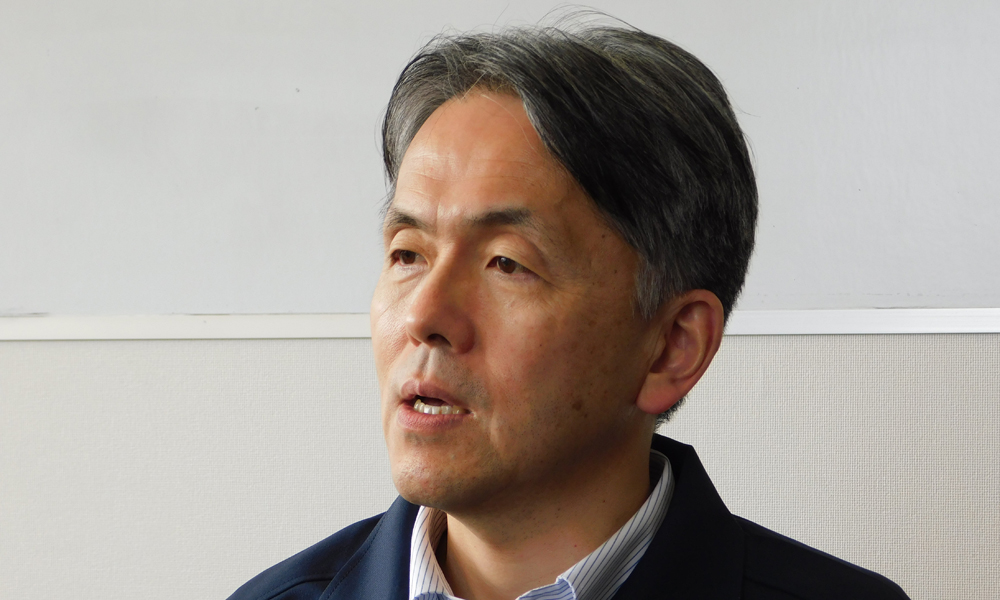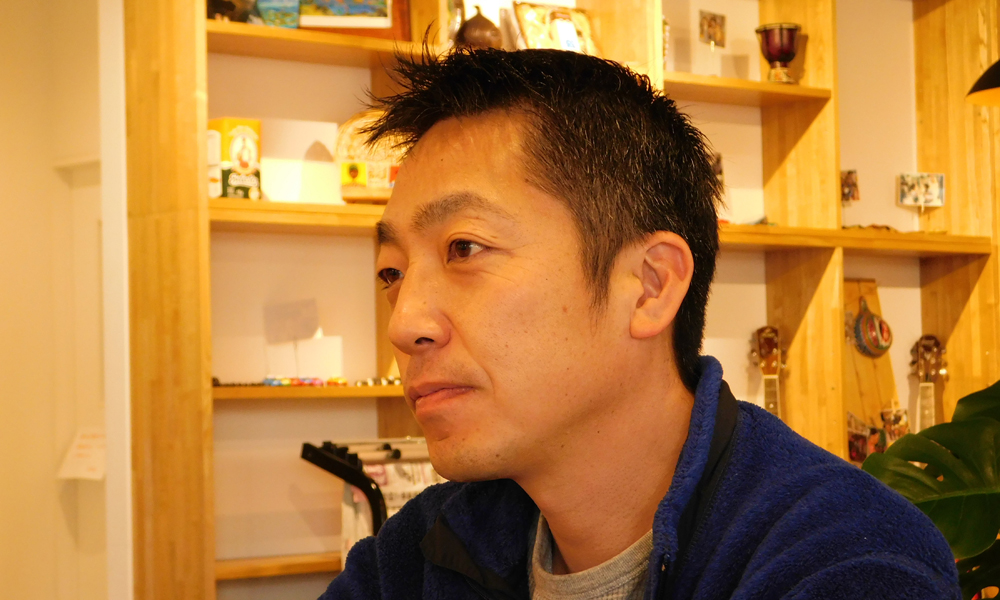Taking advantage of Nagano Prefecture’s great domestic accessibility and local technical talent

Saint-Gobain K.K.
Mr. Yanagisawa Ken’ichi, Chief of Suwa Plant
Hara VillageIn this session, we interviewed soft-spoken Chief of Plant Mr. Yanagisawa Ken’ichi. With his calm demeanor, Mr. Yanagisawa invited a relaxed, affable atmosphere throughout.
In April 1992, Saint-Gobain K.K. transferred a plant from Tachikawa, Tokyo to Hara Village, Suwa-gun, Nagano Prefecture. Of the transfer, Mr. Yanagisawa says the transfer brought with it various merits, such as easier distribution of products to customers all over the country and cooperation with local companies who had excellent machining capabilities.

Details leading up to entry to Nagano Prefecture
Originally, we were a functional resin division of Norton, a U.S. company, (which was later bought up by Saint-Gobain of France), which entered Japan in 1978. It built a new plant in Tachikawa, Tokyo, to raise sales of functional resin products in the Asian region, whose market was mainly Europe and America, and enhance response to differing customer needs in each area.
However, the industrial park in Tachikawa where the plant was located was planned to close because of construction of the Tama Intercity Monorail. So, we had to look for a good place to transfer the plant to. That was the reason for the transfer.
- Incidentally, the company’s name, “Saint-Gobain,” is derived from the name of the village in north France where the company was founded, according to Mr. Yanagisawa.

Reason for considering entry to Nagano Prefecture
When we heard that the industrial park in Tachikawa was going to close, the timing was right. We knew that Hara Village was building the Hara Village Industrial Park near Suwaminami Interchange and inviting factories. We accepted the invitation.
The main reason for our selection of Nagano Prefecture was that it had good accessibility for distribution.
Our business is divided into groups of products and we have customers scattered all over the country. Suwaminami Interchange would be right near the plant, from which we could take Chuo Expressway and go in the direction of either Nagoya or Tokyo easily. This was an important factor.
We considered Niigata Prefecture as another candidate, but finally chose Nagano because it has less snow and a richer distribution network to the rest of the country.
Additionally, the precision industry had long been flourishing in the Suwa area and there were many excellent companies with technical capabilities in manufacturing small parts and machining molds. These facts helped cement the transfer to Hara Village.
In fact, we have established partnerships with several companies that have high technical capabilities in manufacturing molds and machining parts. That helps make up for the technology we don’t have, allowing us to further develop the business.
- The key factors in the transfer were Nagano Prefecture’s good accessibility for distribution, the presence of companies with high-level technical machining capabilities in the Suwa area, a lack of heavy snow, and equivalent sunlight to the Setouchi area (from the Local Meteorological Office’s website: https://www.data.jma.go.jp/nagano/shosai/kikou/kikou.html).

Results of entering Nagano Prefecture
I can only speak for us, but many of the employees from the local areas are hard-working and honest. That has led to low turnover rate. I’m glad that they have been working here a long time.
In addition, for employees not from the area, the location of the plant is ideal for single people who like mountaineering, hiking or winter sports and have been planning to move to a local area, or married people with children who want to bring them up in an environment full of rich natural surroundings. That has resulted in being able to employ excellent talent who have relocated from the cities.
Recently, more people have been placing importance on having a good work-life balance. In that sense, Nagano Prefecture makes for a great work environment no matter where in the prefecture you go.
- Nagano Prefecture is such a popular spot for people wishing to relocate that it has been ranked “1st in Japan for 15 years running in “most desirable prefectures to move to” (Inaka Kurashi no Hon (Book on Country Living, Feb 2021) published by Takarajimasha). That has helped recruitment, resulting in low turnover rates that also help companies’ growth.

What are the merits of a Nagano location from the point of view of a foreign corporation?
Usually, in order to explain an area of Japan to people from other countries, first we have to unfold a map of Asia, locate Japan and point out the area, saying “This is that area of Japan.” This is a routine introduction.
However, Nagano Prefecture is different from other areas because it is globally known as “the host of the Olympic Games.” So, they can understand it with only a rough explanation.
On top of that, Nagano Prefecture has the merit that its rent and land prices are much cheaper compared to larger cities.
Storing goods at a rented warehouse near a harbor of a metropolitan area inevitably incurs high costs. Companies who need vast spaces to store many large items could utilize the significant merit of the low land prices in Nagano Prefecture.
Furthermore, while many foreign companies handle lots of imports and exports such as raw materials, companies of other types, for example, businesses that procure domestic goods and sell them after processing, or manufacturers that produce and sell high value-added items, wouldn’t be affected by the demerit of being far from harbors and airports, I think.
- Nagano Prefecture enjoys more fame than neighboring prefectures for having hosted the Olympic Games, a legacy for which it still relatively well-known abroad. In addition, its low rent and land prices are another attractive feature.

How do you give back to the local community?
In 1992, when we transferred to Hara Village, our number of employees was just around 40. Since then, we have been gradually growing our business and expanding. We hope to keep up the pace and contribute to the employment and development of the local community.
For example, we have been exchanging information between local companies, and actively accepting requests for internships from local schools. We would like to do more and more of these activities in the future.
Additionally, we will need to consider what other contributions we can make from a CSR (Corporate Social Responsibility) perspective.
- As for CSR, Nagano Prefecture has been actively involved from the start in promoting the achievement of the SDGs, and was the first prefecture selected by the national government as an SDGs Future City for proposing outstanding actions towards achieving the SDGs.

As a final question, what is your involvement in environmental action?
Outside of contributions to our local community and manufacturing, as a company, we are very interested in examining what we can do to make societal contributions such as CO2 reduction, which is necessary to address a global problem.
For example, importing and selling goods inevitably incurs distribution costs, and distribution leads to CO2 emission. Moving forward, we must continue to think of ways to combine our business growth with environmental action such as CO2 reduction.
- Companies are increasingly being required to take action for the environment. In working toward its mission of “Go Zero Carbon by 2050,” Nagano Prefecture supports companies through such methods as raising the grant rate for installation of production facilities such as buildings with ZEB certification that meet standard contribution models for the reduction of CO2 emission.



